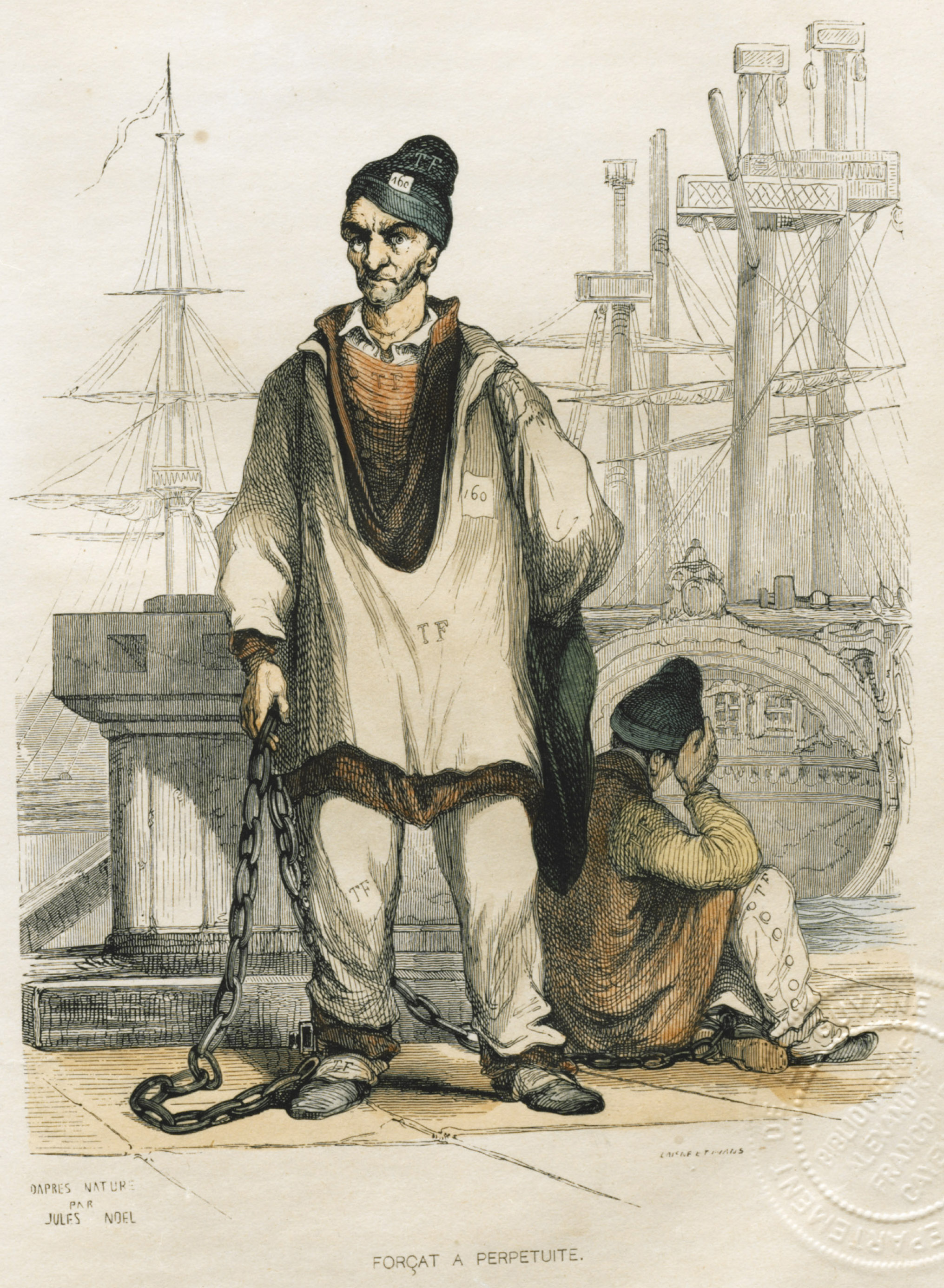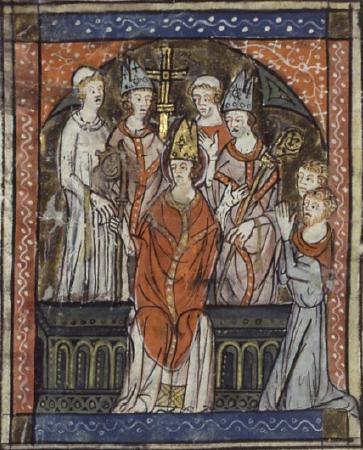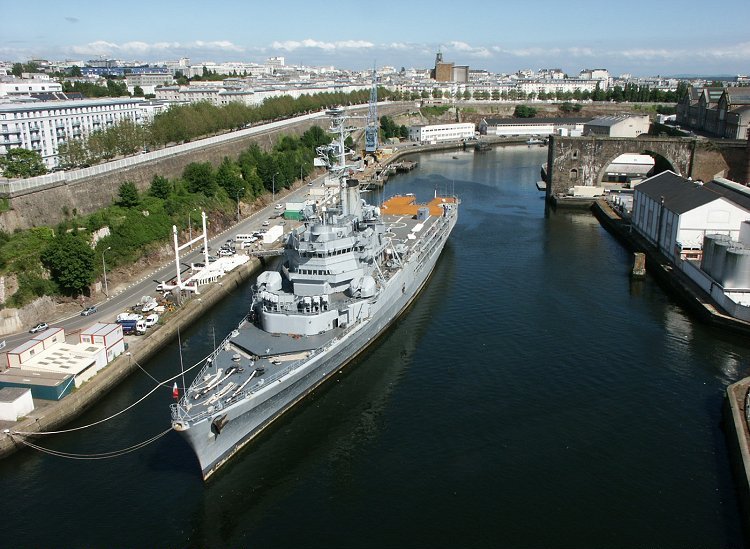|
Bagne De Brest
The Brest Prison (French - ''bagne de Brest'') was a 254m long prison in Brest, France. It was built between 1749 and 1751 by Antoine Choquet de Lindu, dominating the Brest Arsenal, military port it was built to serve. It could house 3000 prisoners (sometimes as much as 10% of the town's population), children as young as 11 as well as older people. It was closed in 1858, and demolished in the late 1940s. History Its construction was launched after Louis XV of France, by an ordinance of 27 September 1748, transferred the (previously independent) galleys to the control of the French Navy, to allow him to provide crews for galleys cheaply. Galley prisoners were previously held on their galleys - now they would be housed in new prisons, such as that at Brest. On two levels divided into 4 large sections, the building could house 400-500 prisoners and was designed to house the police cheaply, prevent prisoners escaping and providing for prisoners' vital needs. Its siting was cont ... [...More Info...] [...Related Items...] OR: [Wikipedia] [Google] [Baidu] |
1751 Establishments In France
In Britain and its colonies (except Scotland), 1751 only had 282 days due to the British Calendar Act of 1751, which ended the year on 31 December (rather than nearly three months later according to its previous rule). Events January–March * January 1 – As the American colony in Georgia prepares the transition from a trustee-operated territory to a British colonial province, the prohibition against slavery is lifted by the Board of Trustees. At the time, the African-American population of Georgia is about 400 people who have been kept as slaves in violation of the law. By 1790, the slave population increases to over 29,000 and by 1860 to 462,000. * January 7 – The University of Pennsylvania, conceived 12 years earlier by Benjamin Franklin and its other trustees to provide non-denominational higher education "to train young people for leadership in business, government and public service". rather than for the ministry, holds its first classes as "Th ... [...More Info...] [...Related Items...] OR: [Wikipedia] [Google] [Baidu] |
History Of Brest, France
Brest (; ) is a port city in the Finistère department, Brittany. Located in a sheltered bay not far from the western tip of the peninsula, and the western extremity of metropolitan France, Brest is an important harbour and the second French military port after Toulon. The city is located on the western edge of continental France. With 142,722 inhabitants in a 2007 census, Brest forms Western Brittany's largest metropolitan area (with a population of 300,300 in total), ranking third behind only Nantes and Rennes in the whole of historic Brittany, and the 19th most populous city in France; moreover, Brest provides services to the one million inhabitants of Western Brittany. Although Brest is by far the largest city in Finistère, the ''préfecture'' (regional capital) of the department is the much smaller Quimper. During the Middle Ages, the history of Brest was the history of its castle. Then Richelieu made it a military harbour in 1631. Brest grew around its arsenal until th ... [...More Info...] [...Related Items...] OR: [Wikipedia] [Google] [Baidu] |
Buildings And Structures In Brest, France
A building, or edifice, is an enclosed structure with a roof and walls standing more or less permanently in one place, such as a house or factory (although there's also portable buildings). Buildings come in a variety of sizes, shapes, and functions, and have been adapted throughout history for a wide number of factors, from building materials available, to weather conditions, land prices, ground conditions, specific uses, prestige, and aesthetic reasons. To better understand the term ''building'' compare the list of nonbuilding structures. Buildings serve several societal needs – primarily as shelter from weather, security, living space, privacy, to store belongings, and to comfortably live and work. A building as a shelter represents a physical division of the human habitat (a place of comfort and safety) and the ''outside'' (a place that at times may be harsh and harmful). Ever since the first cave paintings, buildings have also become objects or canvasses of much artisti ... [...More Info...] [...Related Items...] OR: [Wikipedia] [Google] [Baidu] |
Defunct Prisons In France
{{Disambiguation ...
Defunct (no longer in use or active) may refer to: * ''Defunct'' (video game), 2014 * Zombie process or defunct process, in Unix-like operating systems See also * * :Former entities * End-of-life product * Obsolescence Obsolescence is the state of being which occurs when an object, service, or practice is no longer maintained or required even though it may still be in good working order. It usually happens when something that is more efficient or less risky r ... [...More Info...] [...Related Items...] OR: [Wikipedia] [Google] [Baidu] |
Government Buildings Completed In 1751
A government is the system or group of people governing an organized community, generally a state. In the case of its broad associative definition, government normally consists of legislature, executive, and judiciary. Government is a means by which organizational policies are enforced, as well as a mechanism for determining policy. In many countries, the government has a kind of constitution, a statement of its governing principles and philosophy. While all types of organizations have governance, the term ''government'' is often used more specifically to refer to the approximately 200 independent national governments and subsidiary organizations. The major types of political systems in the modern era are democracies, monarchies, and authoritarian and totalitarian regimes. Historically prevalent forms of government include monarchy, aristocracy, timocracy, oligarchy, democracy, theocracy, and tyranny. These forms are not always mutually exclusive, and mixed governm ... [...More Info...] [...Related Items...] OR: [Wikipedia] [Google] [Baidu] |
Bagne Of Toulon
The Bagne of Toulon was the notorious prison in Toulon, France, made famous as the place of imprisonment of the fictional Jean Valjean, the hero of Victor Hugo's novel '' Les Misérables''. It was opened in 1748 and closed in 1873. Origins: the galleys The bagne was created by an ordinance of King Louis XV on September 27, 1748 to house the convicts who had previously been sentenced to row the galleys of the French Mediterranean fleet. The decree stated, in article 11, "All the galleys in the port will be disarmed, and the ''chiourmes'' (the ancient term for the convict galley rowers) will be kept on land in the ''bagnes'', guarded halls, or other places which will be designated for their confinement." The name 'bagne' came from the Italian word ' (giving '' bagnio'' in English), or "bath", the name of a prison in Rome which had formerly been a Roman bath. Other authors point to a prison in Livorno. Since the 15th century, French prisoners had been sentenced to serve on ... [...More Info...] [...Related Items...] OR: [Wikipedia] [Google] [Baidu] |
Arras
Arras ( , ; pcd, Aro; historical nl, Atrecht ) is the prefecture of the Pas-de-Calais department, which forms part of the region of Hauts-de-France; before the reorganization of 2014 it was in Nord-Pas-de-Calais. The historic centre of the Artois region, with a Baroque town square, Arras is in Northern France at the confluence of the rivers Scarpe and Crinchon. The Arras plain is on a large chalk plateau bordered on the north by the Marqueffles fault, on the southwest by the Artois and Ternois hills, and on the south by the slopes of Beaufort-Blavincourt. On the east it is connected to the Scarpe valley. Established during the Iron Age by the Gauls, the town of Arras was first known as ''Nemetocenna'', which is believed to have originated from the Celtic word '' nemeton'', meaning 'sacred space.' Saint Vedast (or St. Vaast) was the first Catholic bishop in the year 499 and tried to eliminate paganism among the Franks. By 843, Arras was seat of the County of Artois w ... [...More Info...] [...Related Items...] OR: [Wikipedia] [Google] [Baidu] |
Prison
A prison, also known as a jail, gaol (dated, standard English, Australian, and historically in Canada), penitentiary (American English and Canadian English), detention center (or detention centre outside the US), correction center, correctional facility, lock-up, hoosegow or remand center, is a facility in which inmates (or prisoners) are confined against their will and usually denied a variety of freedoms under the authority of the state as punishment for various crimes. Prisons are most commonly used within a criminal justice system: people charged with crimes may be imprisoned until their trial; those pleading or being found guilty of crimes at trial may be sentenced to a specified period of imprisonment. In simplest terms, a prison can also be described as a building in which people are legally held as a punishment for a crime they have committed. Prisons can also be used as a tool of political repression by authoritarian regimes. Their perceived opponents may b ... [...More Info...] [...Related Items...] OR: [Wikipedia] [Google] [Baidu] |
Arsenal De Brest
The Brest Arsenal (French - ''arsenal de Brest'') is a collection of naval and military buildings located on the banks of the river Penfeld, in Brest, France. It is located at . Timeline *1631-1635 Beginning of the foundations of the port infrastructure. *1674 Appearance of the Powder Magazines, Cordellerie and Military Hospital. *1683 Creation of the Troulan dock. *1746 Creation of the three Pontaniou docks near the anchor forges and naval constructions. *1752 Construction of the bagne de Brest, Bagne demolished in 1947. *1807 Construction of the Bâtiment aux Lions to house the arsenal's magazines. *1822-1827 Construction of Bassin 6 at the Salou. *1858 Appropriation of the Tourville and Jean Bart quays by the navy. *1864-1865 Construction of Bassin 7 at the Salou. *1865 Closure of the Penfeld port to commercial boats, turning it into a military port. *1889-1896 Construction of the South Jetty (1 500 m). *1895-1900 Construction of the West Jetty (200 m). *1899-1902 Transfo ... [...More Info...] [...Related Items...] OR: [Wikipedia] [Google] [Baidu] |






